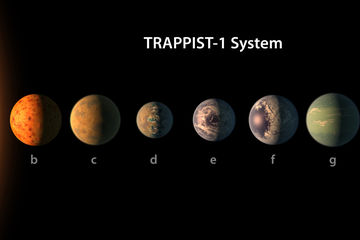Exoplanet discovery fuels talk of extraterrestrial life; Bruckner skeptical

February 24, 2017
Scientists have found seven exoplanets that they believe could host life, but one Baldwin science teacher is skeptical.
The seven exoplanets have been found orbiting a cool red dwarf star, which is the most common type of star, known as Trappist-1.
An exoplanet is any planet outside of our own solar system. The first exoplanet discovered was in 1988 and more than 3,000 have been discovered since then.
These most recent exoplanets were discovered by a NASA telescope in space known as Spitzer, which was launched in 2003.
All seven of the exoplanets are closer to the size of Earth than other exoplanets that have previously been found. All of the new exoplanets are about the size of Earth or Venus, or smaller.
Six of the recently found exoplanets lie in an area where temperatures can range from 32 to 212 degrees Fahrenheit.
Three of those six planets are within what is considered the habitable zone. This means that those three planets, known as planets E, F, and G, could currently harbor life.
But Michael Bruckner, who teaches earth and space science, is skeptical.
“We will not find life on the habitable exoplanets,” Bruckner said, “Our planet is the only one with life.”
Those planets are close enough to Trappist-1 and warm enough to have liquid water, Bruckner said. But he does not believe they will have life.
Scientists still have many more studies to do on the exoplanets’ atmospheres before they can determine whether life now or ever existed on these planets.


